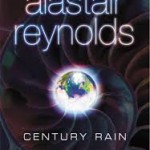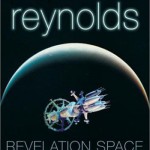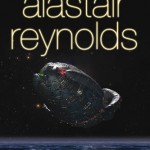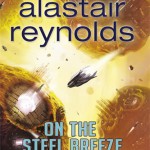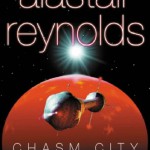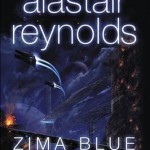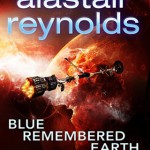Or thereabouts. After gaining my degree in astronomy from Newcastle in 1988, I moved to Scotland to begin my postgraduate studies in St Andrews. I was to spend three years working toward my PhD in optical astronomy, during which period I also made my first professional sales as a writer. Here, a quarter of a century later, are four of us from those days. I’m on the left; next to me is Gavin Ramsay, who joined us in St Andrews a year or so after my arrival. Gavin has remained in astronomy and now works at Armagh Observatory in Northern Ireland; he is a leading expert on cataclysmic variable stars and compact binaries. During our time in St Andrews Gavin introduced me to Shostakovich, establishing a lifelong interest in classical music – I am hugely indebted. Gavin and I also worked in the same department in Utrecht, though on different research programs. Later, we were part of a collaborative study between ESA and the Mullard Space Science Laboratory on high speed optical observations of magnetic cataclysmic variables.
Next to Gavin is Steve Bell; Steve was a few years ahead of me in St Andrews and helped show me the ropes. Steve was also my partner during two observing runs at the Anglo-Australian Telescope in New South Wales. During the first such run, Steve contracted a severe eye infection which resulted in him being admitted to hospital and spending the rest of the trip having emergency treatment to save his sight. Fortunately all came well, and our second run was more successful. Our main research topic was optical spectroscopic observations of high mass X-ray binaries, using the instrument to measure the velocity of one of the stars in a binary. This radial velocity curve then gives you an idea of the mass of the other object in the binary, which might well be a neutron star. Measuring neutron star masses is a critical test of fundamental physics since the Chandrasekhar Limit predicts that they cannot be more massive than 1.4 times the mass of the Sun. All our neutron star measurements were consistent with the theory, pleasingly enough. Since leaving St Andrews, Steve has worked for many years in the Nautical Almanac Office and is now in a senior position at the UK Hydrographic Office in Taunton. If you purchased the official guide to the 1999 eclipse, that was Steve’s work.
Next to Steve is Paul Rainger, with whom I shared an office after my arrival in St Andrews. Paul was nearing the end of his PhD work but was spending increasing amounts of his time involved with politics; our local MP was Menzies Campbell with whom Paul worked for several years. Paul later moved to London to continue his involvement with the Liberal party. Paul is now resident in Bristol, where he is involved in green activism; he is one of the curators of Bristol’s Big Green Week which this year takes place in June. Owners of Interzone 39, which contained my second published story – “Dilation Sleep” – will note that Paul is credited with taking the author photo.
Photo by Emma; thanks to Emma and Paul for hosting this most enjoyable reunion.

